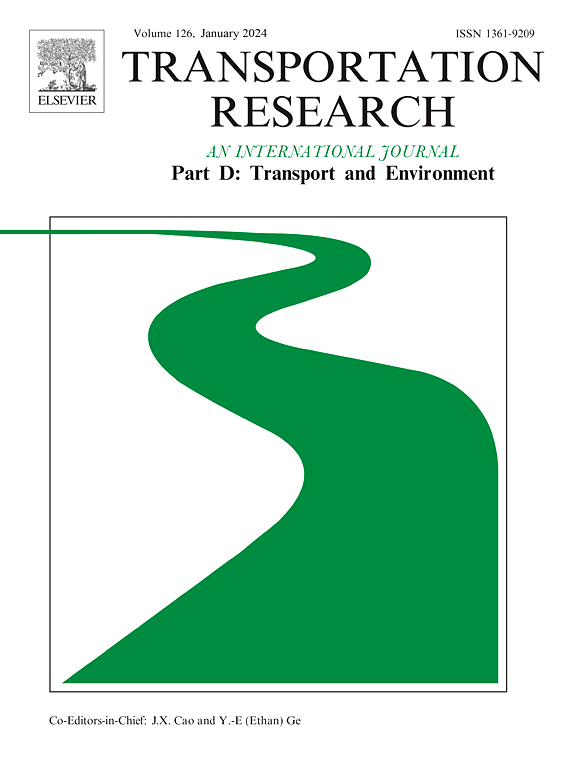How far is too far? Urban versus rural acceptable travel distances
IF 7.3
1区 工程技术
Q1 ENVIRONMENTAL STUDIES
Transportation Research Part D-transport and Environment
Pub Date : 2024-11-05
DOI:10.1016/j.trd.2024.104474
引用次数: 0
Abstract
This study examines spatial heterogeneity in acceptable travel distances across destination types and travel modes, contributing to the normative debate on setting accessibility sufficiency thresholds. Utilizing data from a 2020 survey on perceived accessibility in the Netherlands, the research finds that acceptable travel distances vary between urban and rural areas, contingent upon the mode of transportation. Rural residents accept larger distances, primarily facilitated by car use, while acceptable distances for active modes are higher in urban areas. Particularly in rural areas, travel distances do not always align with the acceptance of distances, especially regarding public transport. The key message for accessibility policy is that uniform distance thresholds may be ineffective across regions with diverse accessibility needs. The study concludes that empirical insights into the sources of variation in acceptable travel distances can assist in addressing the tension between setting general accessibility thresholds and strategies tailored to specific groups in specific areas.
多远才算远?城市与农村可接受的旅行距离
本研究探讨了不同目的地类型和旅行模式下可接受旅行距离的空间异质性,为关于设定无障碍充分性阈值的规范性辩论做出了贡献。研究利用 2020 年荷兰可感知可达性调查的数据,发现城市和农村地区可接受的旅行距离因交通方式而异。农村居民可接受的距离更远,这主要得益于汽车的使用,而在城市地区,主动交通方式可接受的距离更远。特别是在农村地区,出行距离并不总是与可接受距离一致,尤其是在公共交通方面。对于无障碍政策来说,关键信息是统一的距离阈值在无障碍需求各不相同的地区可能是无效的。研究得出的结论是,从经验上深入了解可接受出行距离的差异来源,有助于解决设定一般无障碍阈值与针对特定地区特定群体的战略之间的矛盾。
本文章由计算机程序翻译,如有差异,请以英文原文为准。
求助全文
约1分钟内获得全文
求助全文
来源期刊
CiteScore
14.40
自引率
9.20%
发文量
314
审稿时长
39 days
期刊介绍:
Transportation Research Part D: Transport and Environment focuses on original research exploring the environmental impacts of transportation, policy responses to these impacts, and their implications for transportation system design, planning, and management. The journal comprehensively covers the interaction between transportation and the environment, ranging from local effects on specific geographical areas to global implications such as natural resource depletion and atmospheric pollution.
We welcome research papers across all transportation modes, including maritime, air, and land transportation, assessing their environmental impacts broadly. Papers addressing both mobile aspects and transportation infrastructure are considered. The journal prioritizes empirical findings and policy responses of regulatory, planning, technical, or fiscal nature. Articles are policy-driven, accessible, and applicable to readers from diverse disciplines, emphasizing relevance and practicality. We encourage interdisciplinary submissions and welcome contributions from economically developing and advanced countries alike, reflecting our international orientation.

 求助内容:
求助内容: 应助结果提醒方式:
应助结果提醒方式:


